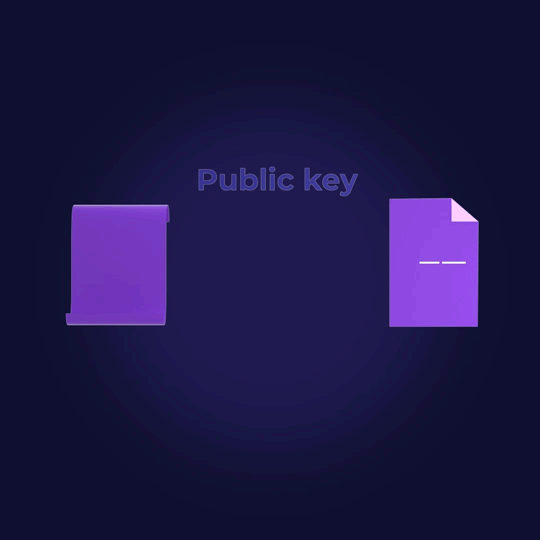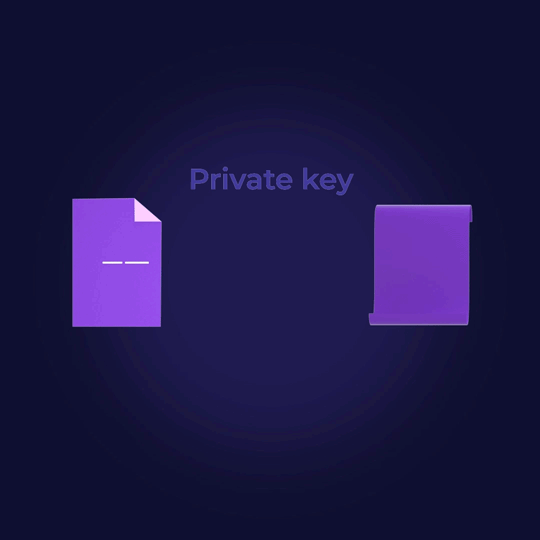Public and private key
In the previous chapter, we learned that cryptocurrencies are protected by asymmetric cryptography. In this chapter, we will explain how this type of cryptography works in securing digital transactions.
PUBLIC KEY
When we talk about a public key, we are not talking about a real, physical key. It is a long string of numbers and letters used to encrypt and protect data.
It is a cryptographic code that allows the user to receive cryptocurrencies to their wallet. We can picture it as an account number, which is needed when someone wants to send cryptocurrencies to a user. The public key has the task of encrypting the data, while the other part of the pair is used to decrypt it. They are managed by programs or devices called crypto wallets.

To send and receive cryptocurrencies, a shortened version of the public key, known as a public address, is used, which acts like a bank account number. A public address is a secure way to manage digital assets, as it can only be accessed with the corresponding private key. It serves as the destination for incoming transactions and is usually represented as a string of letters and numbers that are abbreviated public keys.
PRIVATE KEY
A private key represents the other half of the pair. As with the public key, this is not an actual physical key, but a code that is very important for managing cryptocurrencies. It’s used to decrypt data and create digital signatures.
It’s a unique secret code, which meant that each individual has a unique and
It is a unique secret code, which means that each individual has a one-of-a-kind code – somewhat like fingerprints. This code is used to access and manage your crypto assets, similar to how a password is used to access your online accounts.

The private key is generated from a recovery phrase, better known as a seed phrase. A recovery phrase is a string of words used to generate a crypto wallet’s private key. It acts as a backup that allows the user to recover funds in case of losing the password to your wallet. It is important to store the recovery phrase in a safe place as it is the only solution to recover the funds if the private key is lost or compromised.
Just like you need a password to access your email or social media accounts, you need a private key to access and manage your cryptocurrency assets. The private key is stored in the digital wallet and is used to sign transactions. When a transaction is carried out, it is confirmed or signed with a private key, which also proves the ownership of a cryptocurrency.
The private key is an important part of the crypto-asset security, so it is necessary to handle it as carefully as possible. It is crucial that the private key is kept safe and not shared with anyone. If someone else gains access to an individual’s private key, they can access and control their crypto assets. Likewise, lost access to the private key means lost control over crypto assets.
